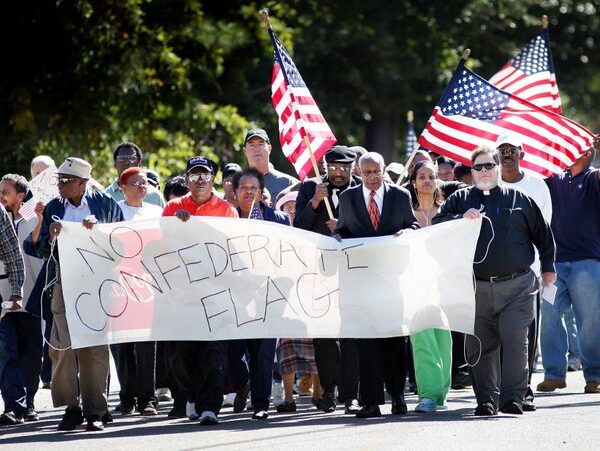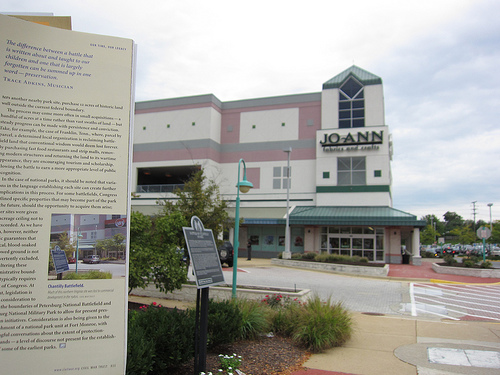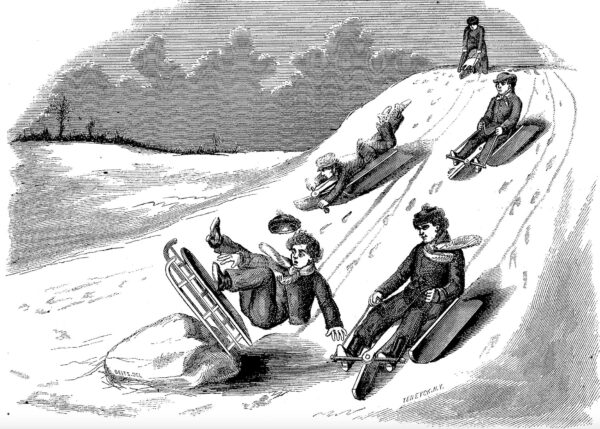
General Robert E. Lee rides among his troops during the Battle of Gettysburg.
Several European journalists and military officers wrote about their experiences with the Army of Northern Virginia. Almost all of them, it is important to acknowledge, adopted a very favorable stance toward Robert E. Lee and his soldiers. The most quoted by far is Arthur James Lyon Fremantle, a captain in Britain’s Coldstream Guards whose Three Months in the Southern States: April–June, 1863(1863; reprint, University of Nebraska Press, 1991) includes classic passages about the Battle of Gettysburg and the army’s high command. Lieutenant Colonel Garnet Wolseley, later commander in chief of British forces, penned “A Month’s Visit to Confederate Headquarters,” an admiring portrait of Lee that Blackwood’s Magazine ran in January 1863. Former Prussian cavalry officer Heros von Borcke served on James E.B. “Jeb” Stuart’s staff and wrote a self-aggrandizing, though still valuable, two-volume work titled Memoirs of the Confederate War for Independence(1866; reprint, Peter Smith, 1938). Less well known than either Fremantle’s or von Borcke’s books, the writings of Francis Charles Lawley, Justus Scheibert, and Fitzgerald Ross merit attention from anyone studying the Army of Northern Virginia.
Lawley succeeded William Howard Russell as The Times of London correspondent reporting on the American war. His articles—
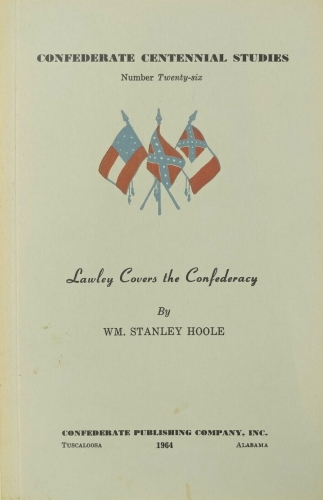
detailed letters of approximately 3,500 words each—appeared in The Times from October 1862 through Appomattox and helped shape British opinion about the Confederacy and its most famous army. William Stanley Hoole’s Lawley Covers the Confederacy(1964; reprint, Broadfoot, 2000) quotes extensively from the letters, highlighting those that deal with major battles and prominent military leaders. One letter concerns Thomas J. “Stonewall” Jackson’s famous flank attack at Chancellorsville, its tenor indicating how strongly Lawley identified with the Confederate army. “Swift and sudden as the falcon sweeping her prey,” he observed breathlessly, “Jackson had burst on his enemy’s rear and crushed him before resistance could be attempted. Passing right over the plank road and extending almost up to Ely’s Ford road, getting behind Chancellorsville, Jackson’s three noble divisions [Hill’s, Rodes’s, Colston’s] raced gallantly forward, drunk with the animal joy and inebriation of battle.” News five days later of Jackson’s imminent death left Lawley with “a mist in my eyes and a sense of suffocation rising in my throat.”
As the war entered its final phase in March 1865, Lawley composed a tribute to Lee that anticipated the general’s farewell order to the Army of Northern Virginia at Appomattox. For the last year, Lee’s army “has been scantily fed from hand to mouth … outnumbered in the ratio of 3 to 1 … has endured all that can test the persistency of man.” As one “who during these long months of agony and suspense has watched the career of Robert E. Lee,” Lawley found it difficult “to speak of him otherwise than in the language of extravagant enthusiasm.” The Confederate chieftain, The Times correspondent wrote, “has been to this great struggle more than Washington was to the Revolutionary War.”
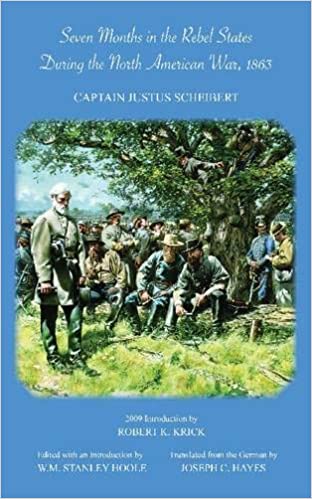
Captain Justus Scheibert of the Prussian army observed operations in the eastern theater between April and July 1863. His Seven Months in the Rebel States During the North American War, 1863(1868) was translated into English by Joseph C. Hayes and edited by William Stanley Hoole (1958; reprint, University of Alabama Press, 2009). Scheibert kept a diary that bolstered his memory, and Seven Months stands up well when checked against other sources. Nearly two-thirds of the narrative takes Scheibert through the Chancellorsville Campaign, to the Battle of Brandy Station, and into Pennsylvania during Lee’s invasion in June–July 1863. Scheibert spent considerable time at Lee’s and Stuart’s headquarters and crossed paths with his countryman von Borcke, and with Fremantle, Lawley, and Fitzgerald Ross. All five mentioned one another—often in recounting the same moments, which allows modern readers to make useful comparisons among their texts.
On the evening of May 1, 1863, Scheibert first saw Stonewall Jackson. Camped with the army’s headquarters staff after the first day of fighting at Chancellorsville, he noticed Lee “peering thoughtfully into the distance, as if he were expecting someone. After some time, a thin man with black beard, black hair, and somewhat stooped posture dismounted. In spite of his weather-beaten countenance, this man had features more like those of a thinker than of a warrior. With an attitude of great respect, he approached the General, who shook hands with him in a manner that revealed sincere pleasure and esteem. The newcomer was the famous Stonewall Jackson.” Pieces of shrapnel broke the quiet atmosphere of Spotsylvania’s Wilderness, recalled Scheibert, passing overhead “with monotonous whirring, sending down twigs and leaves.” Soon the two generals commenced a “serious, eager conversation” that resulted in plans to strike the Union right flank on May 2. When their conference concluded, they rose, twice shook hands, and “Jackson rode away.” “I wonder,” mused Scheibert, “whether the friends suspected that this would be their last handclasp.”
At Gettysburg on July 2, 1863, Scheibert joined Fremantle in climbing an oak tree on Seminary Ridge. “From here the battlefield lay before us like a panorama,” he remembered: “On July 2 and 3, therefore, I did not move a step from the tree, from where I frequently had to report what I saw.” The tree afforded a clear view of the failed Pickett–Pettigrew assault, which Scheibert did not believe portended disaster: “15,000 men, two and a half divisions, … had made a vain, though bloody attack, with heavy losses, but the other six and a half divisions were completely intact.” His conclusion about Lee’s crucial decisions during the battle rings true: “[E]xcessive disdain for the enemy, who fought better, however, in his own country than anywhere else, caused the simplest plan of a direct attack upon the position at Gettysburg to prevail and deprived the army of victory.”
Fitzgerald Ross’ A Visit to the Cities and Camps of the Confederate States(1865; reprint, with a slightly different title and

annotations by Richard B. Harwell, University of Illinois Press, 1958), also includes valuable material on the Gettysburg Campaign. A Scot who served in the Austrian army and unabashedly embraced the Confederate cause, Ross filled his account with memorable vignettes of leading Rebel officers. Near the Peach Orchard on the afternoon of July 2, he wrote, “Longstreet rode up the line and down again, occasionally dismounting, and going forward to get a better view of the enemy’s position.” Watching an artillery duel while with Longstreet, Ross overheard a conversation that revealed the moment’s tension: “As we passed [William] Barksdale’s Mississippi Brigade the General came up eagerly to Longstreet; ‘I wish you would let me go in, General; I would take that battery in five minutes.’ ‘Wait a little,’ said Longstreet, ‘we are all going in presently.’ The men were as eager as their leader, and those in the front line began to pull down the fence behind which they were crouching. ‘Don’t do that, or you will draw the enemy’s fire,’ said Longstreet, who sees and hears everything.”
A few days after the battle, with the army in retreat toward the Potomac River, Ross listened while Lee “spoke very openly on the subject of the late campaign.” Had he known that George G. Meade concentrated all of the Federal army at Gettysburg, Lee stated, “he certainly should not have attacked him: indeed, it had not been his interest nor his intention to bring on a great battle at all.” Lee then explained why he had pressed the action: “[P]artly by the success of the first day, believing that Meade had only a portion of his army in front of him, and seeing the enthusiasm of his own troops, he had thought that a successful battle would cut the knot so easily and satisfactorily, that he determined to risk it.” As for Lee’s critical dearth of information about Meade’s situation, “His want of knowledge of the enemy’s movements he attributed to Stuart having got too far away from him with his cavalry.”
Lawley, Scheibert, and Ross all commented about enslaved African Americans with Lee’s army—and all repeated Confederate claims about slavery as a benign institution. Lawley noted “troops of negro camp-followers” accompanying the army into Pennsylvania in June 1863, while Scheibert mentioned that the “officers’ servants and some teamsters and convoy soldiers were Negroes…. These blacks were treated very well.” Ross parroted what he doubtless heard from his Confederate hosts in avowing that enslaved people “look up to their masters for protection, which is readily given, not only as a matter of course to their own servants but to any other ‘darkies’ as occasion may require. If any one in the South wished to make quite sure of getting into trouble, he need only abuse or ill-treat a negro….”
Testimony from these foreign witnesses left an indelible mark on the literature relating to the Army of Northern Virginia. Modern readers should engage their accounts knowing that, in Fremantle’s words, they wrote not as disinterested parties but with admiration for “the courage, energy, and patriotism of the whole population, and the skill of its leaders, in this struggle against great odds.”
GARY W. GALLAGHER IS THE JOHN L. NAU III PROFESSOR OF HISTORY EMERITUS AT THE UNIVERSITY OF VIRGINIA. HIS PUBLICATIONS INCLUDE THE ENDURING CIVIL WAR: REFLECTIONS ON THE GREAT AMERICAN CRISIS(LSU PRESS, 2020).
This article appeared in the Spring 2022 issue (Vol. 11, No. 3) of The Civil War Monitor. Read other installments in this series: Part 1: Foundational Works Part 2: Artillerists Part 4: Corps Commanders Part 5: Division Commanders Part 6: Managing the Cavalry Part 7: Robert E. Lee
